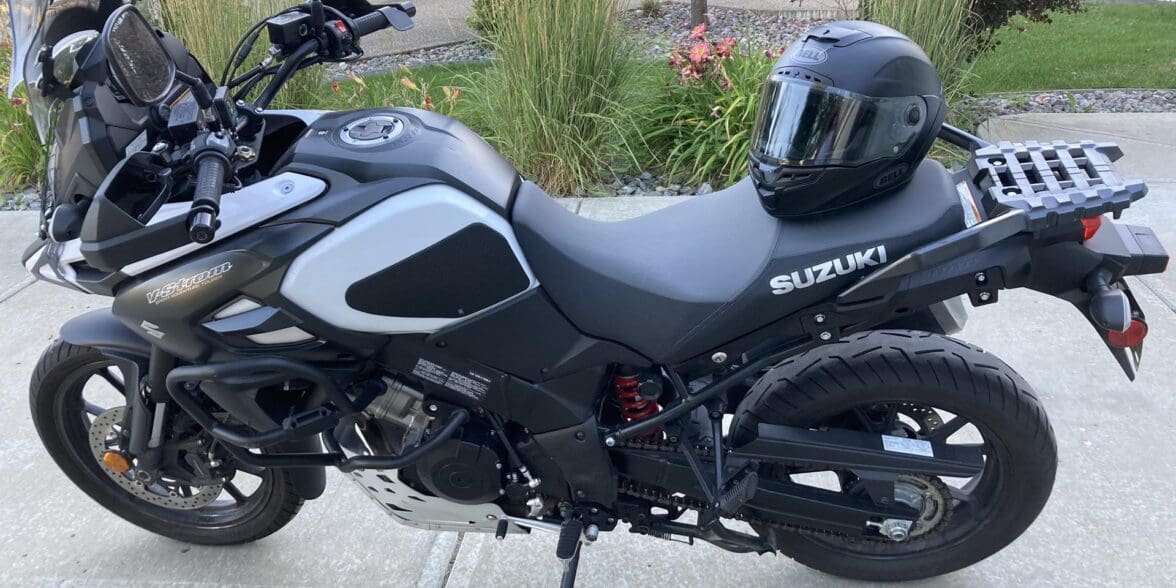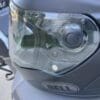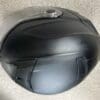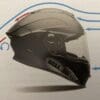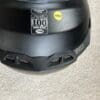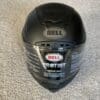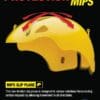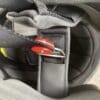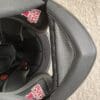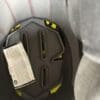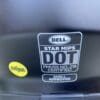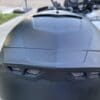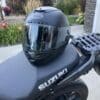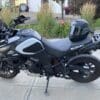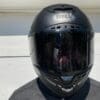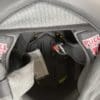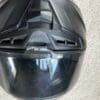Bell introduced the Star 55 years ago—the first full-face motorcycle helmet and a giant leap forward in head protection. With the passage of time, the rest of the industry has innovated in an effort to match the standard set by the Star.
The 2022 Star DLX MIPS is the latest iteration of this iconic helmet and it more than lives up to the high standards set by its predecessors. In fact, as a hardcore Shoei fan (my 2018 Shoei RF-1200 has 30,000+ kms on it) I’m prepared to say the new DLX MIPS version of the Star has become my new favourite helmet.
While Shoei and Arai claim their helmets are the industry benchmark, this premium offering from Bell more than holds its own against these Japanese stalwarts—and anyone else, for that matter.
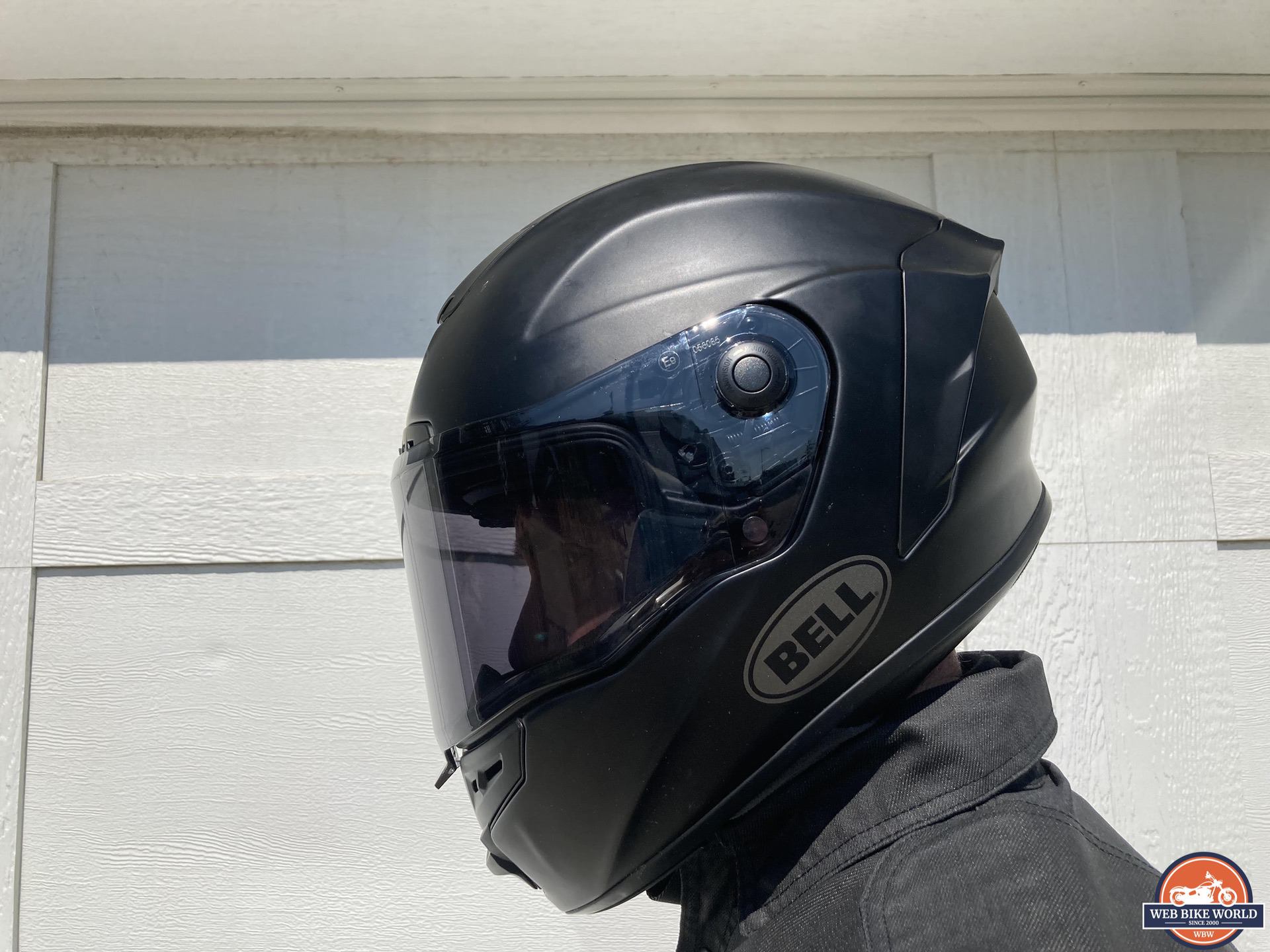
First Impressions of the Bell Star DLX MIPS Helmet
Give Bell credit for not resting on their laurels. The Star has been reimagined many times and the 2022 DLX MIPS version truly reflects the ongoing evolution of the original design intent. Straight out of the box the helmet oozes quality and attention to detail. It features a TriMatrix composite shell, MIPS energy management system, XStatic liner, and—most especially—a Panovision ProTint™ Photochromic shield on a MASSIVE viewport. These bells and whistles inspire confidence, but it’s the intangible feeling of holding the helmet in your hands that won me over.
This helmet just feels right. It has a smaller, streamlined profile for a more refined fit, something you notice when you have the helmet in your hands, and it’s been tuned specifically for a more upright riding position, another thing you notice when you put the helmet on and swing a leg over your bike.
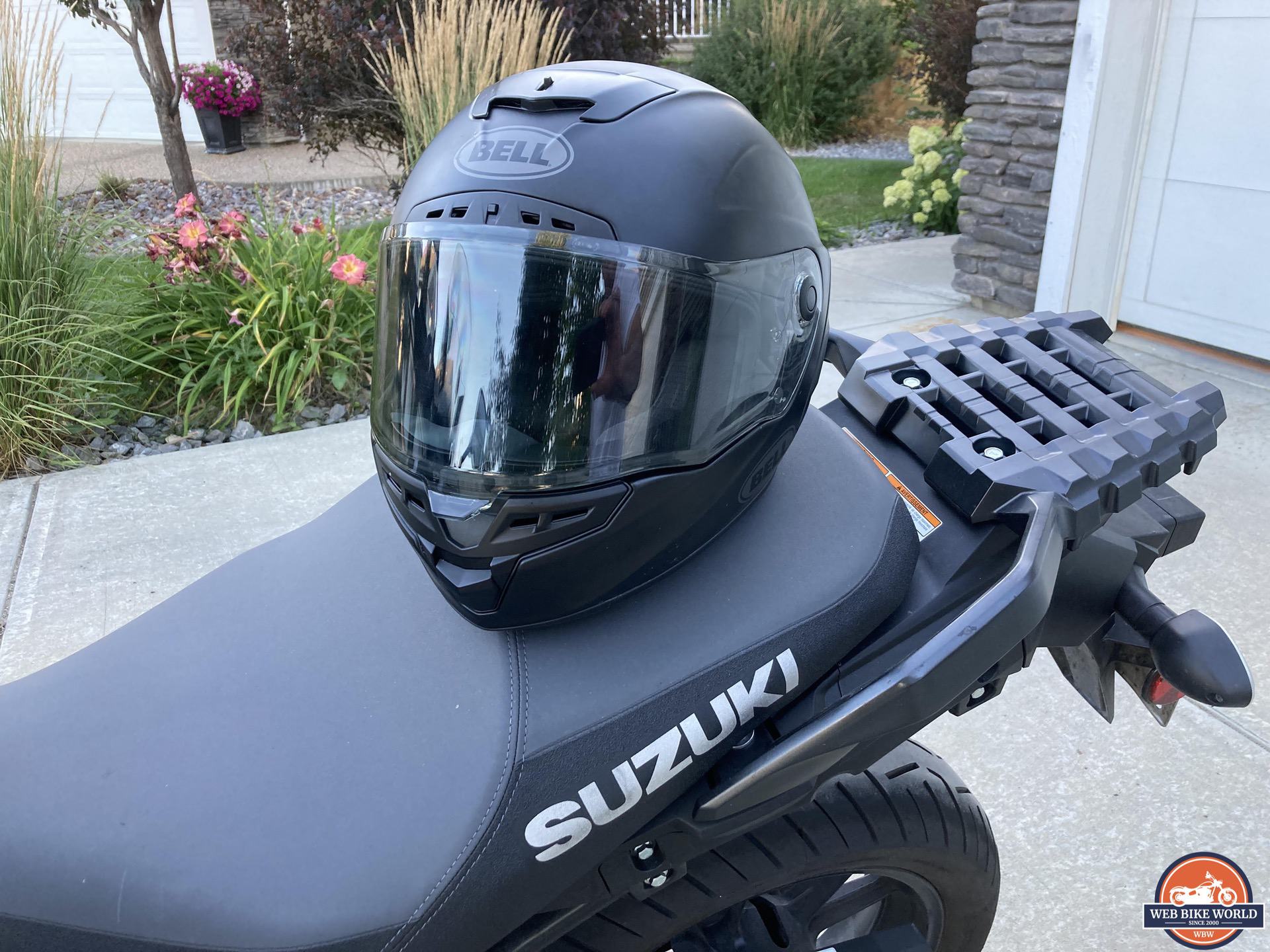
In short, before you even head out for a ride, you have the feeling that this helmet has found the sweet spot of combining the comfort and riding characteristics of a touring helmet with track-inspired aerodynamics and performance.
Bell Star DLX MIPS Fit & Comfort
All Bell Star helmets have what Bell calls a “race fit”. As such, the DLX MIPS can feel snug at first, but I put this down to a narrow neck roll opening and snug cheek pads to occlude noise and mitigate movement at high speeds.
Bell claims these padded elements will conform to your unique features by a break in margin up to 20% over time as the foam compresses. I can attest to the fact that the helmet definitely felt “snug” to downright “tight” for the first day or so, but I quickly adjusted to it and felt no discomfort after less than 100 km of saddle time on the bike.
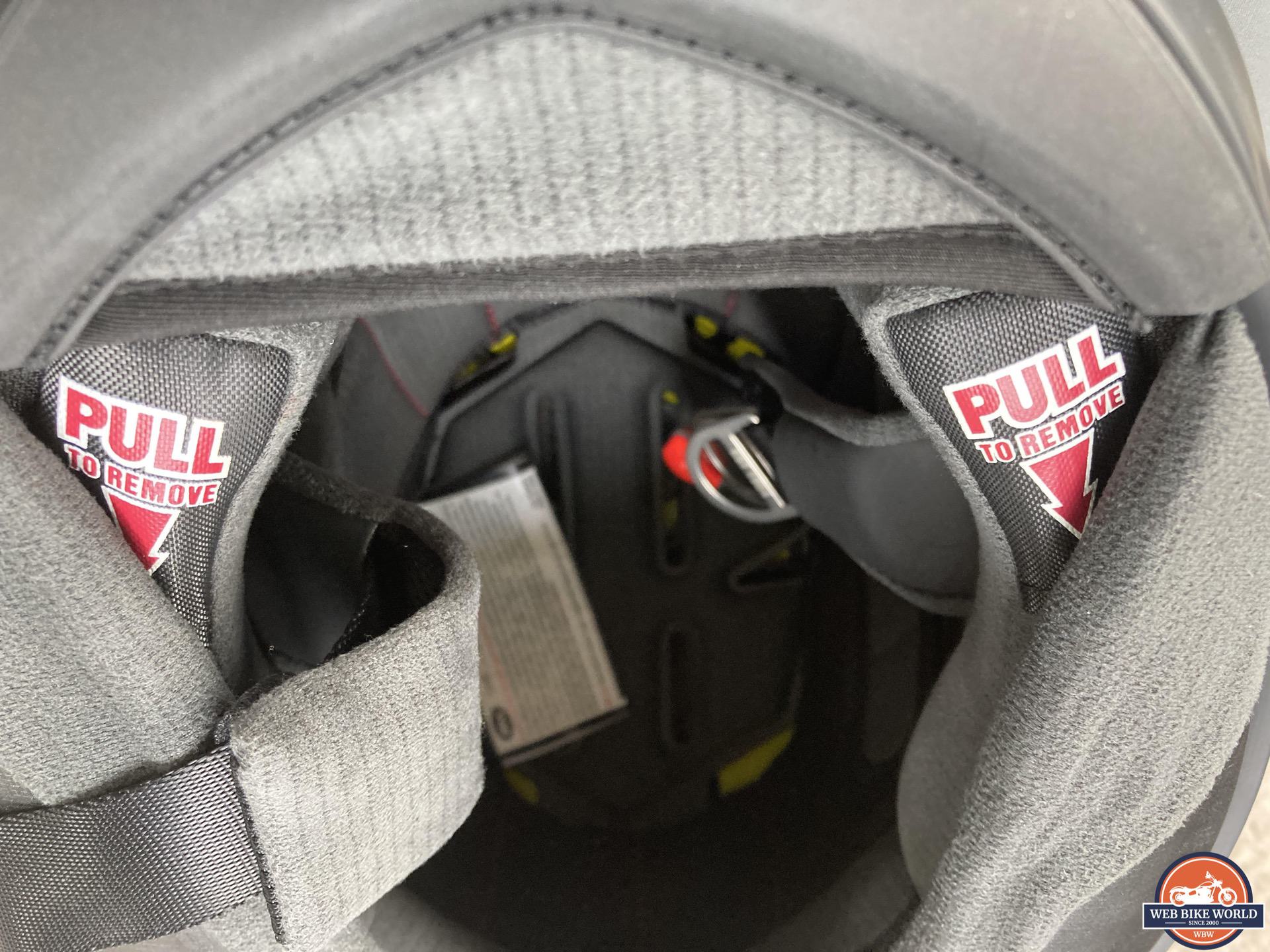
For those who doubt what I’ve said above, all of the interior pads can be snapped in and out easily so you can shave a little foam away or add some extra cushioning if needed to dial in the fit—Bell provides extra pads in the box. For those who need it, Bell offers thicker cheek and crown pad options for the Star DLX MIPS.
I should also note that the securing buttons for the pads are strategically located to avoid causing pressure points—a subtle thing, but one you notice after several hours on the bike. And yes, the cheek pads have emergency pulls as well, and the entire EPS liner and cheek pads are designed to accommodate your favorite motorcycle intercom devices.
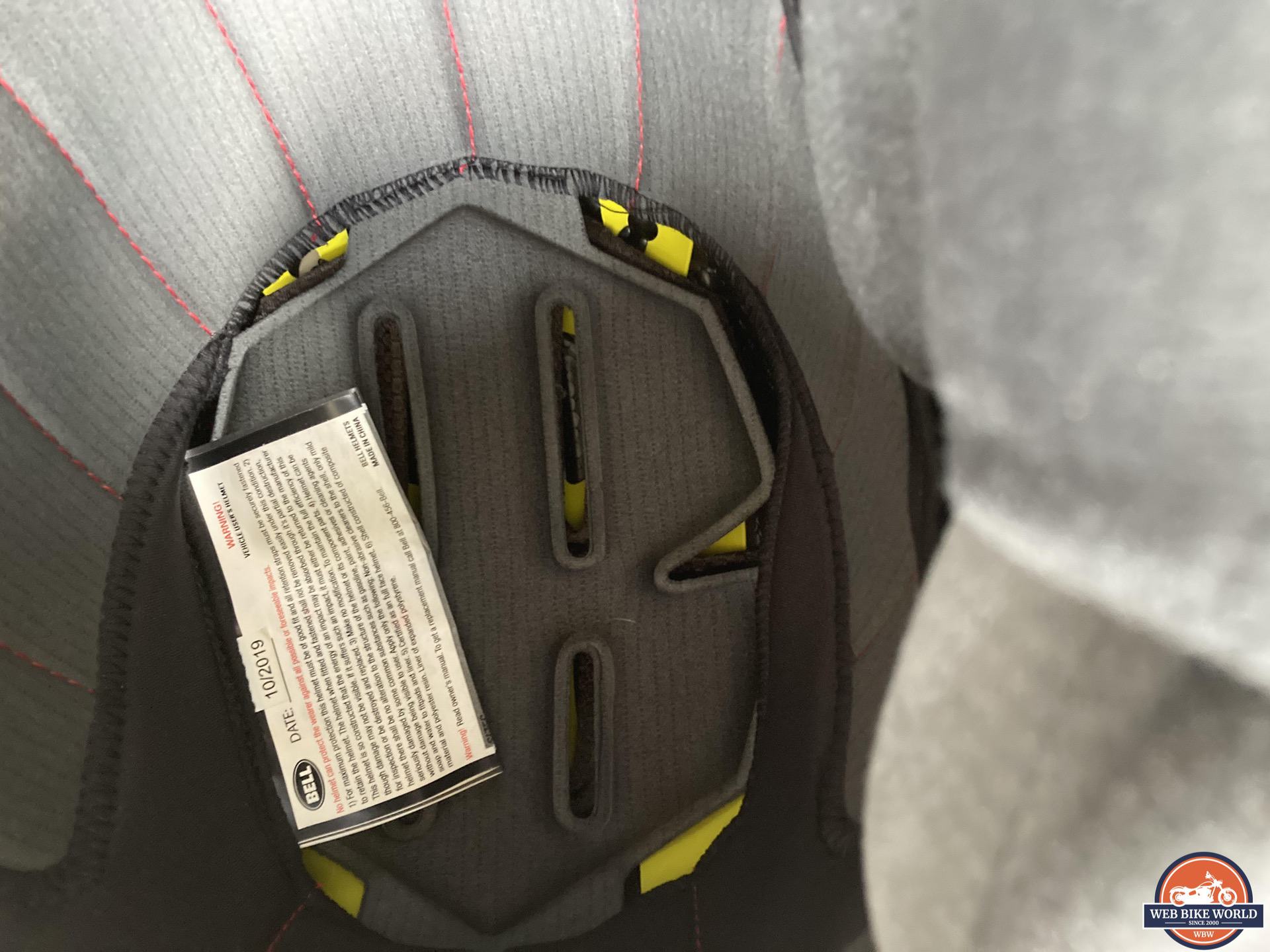
Finding Your Size
Though Bell describes the Star DLX MIPS as an Intermediate Oval head shape, fitment and comfort is highly personal—so it is advisable to get fitted professionally for the best results.
Bell’s size chart for the Star DLX MIPS is shown below. I wear a medium in Shoei (and most other helmets) and found the medium perfect after a very short period of time.
| SIZE | HEAD (CM) |
| XS | 53-54 |
| SM | 55-56 |
| MD | 57-58 |
| LG | 59-60 |
| XL | 61-62 |
| 2XL | 63-64 |
The interior of the Star DLX MIPS is plush, without being overly so. More important it’s what Bell calls their X-static XT2 silver liner. The liner material has been clinically-proven to provide bacteria and odor protection throughout the life of the liner. X-Static fibers are permanently bonded with a layer of 99.9% pure metallic silver.
This silver is the key to X-Static’s powerful antimicrobial properties, as it creates an ionic shield that permanently inhibits the growth of bacteria and fungi. Fabrics made with X-Static fibers are flexible, with the natural look and feel of traditional textiles, while offering all the benefits of pure silver. No more funky liner smell.
Eyeglass Compatibility
Just in case you thought this would be an unqualified rave review, I have one nitpick with the fit and comfort of the Star DLX MIPS. It is promoted as being eyeglass compatible, and while eyewear arm pockets have been woven into the interior liner, let’s just say that a more dexterous person than me, or someone wearing wire rim glasses is the target audience here. I bent my eyeglasses trying to fit them into the pockets. I eventually made it work, sort of, but this is not the key selling feature of the helmet.
Bell Star DLX MIPS Helmet Safety & Sound
As every rider has been told, the helmet is the single most important piece of safety equipment you have, other than your own good judgment. As such, safety is the criterion against which all helmets are ultimately measured. The new Star features MIPS or “Multi-directional Impact Protection,” an advanced technology liner, which reduces rotational forces in a crash.
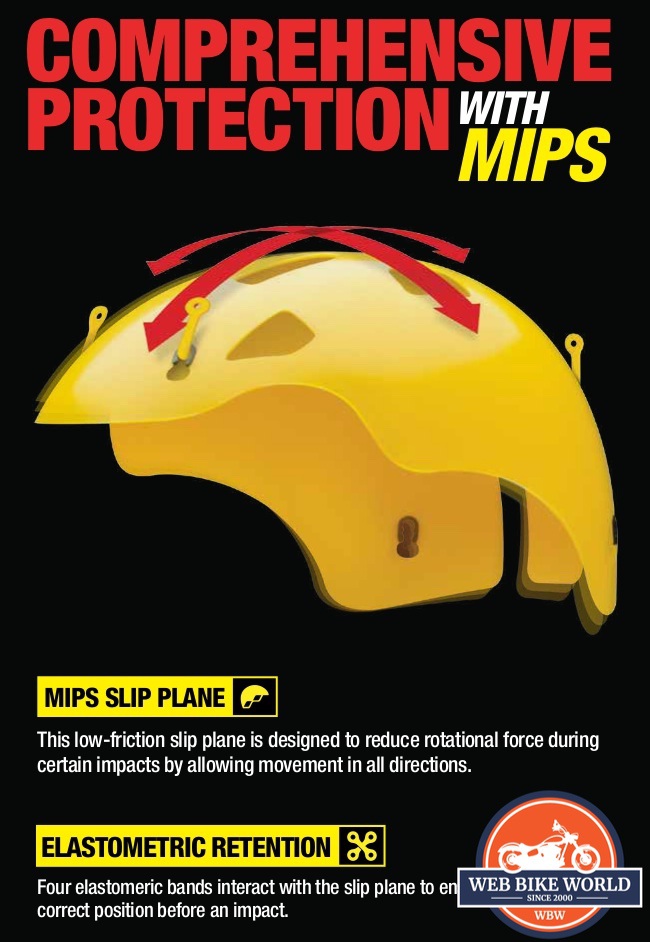
How MIPS Makes the Bell Star DLX MIPS Safer
MIPS uses slip-plane technology, in conjunction with the EPS liner, to provide a greater range of protection for riders. Specifically, the EPS liner absorbs the main impact forces, while the MIPS system specifically helps reduce rotational forces during a crash—a direct cause of concussions and other brain injuries.
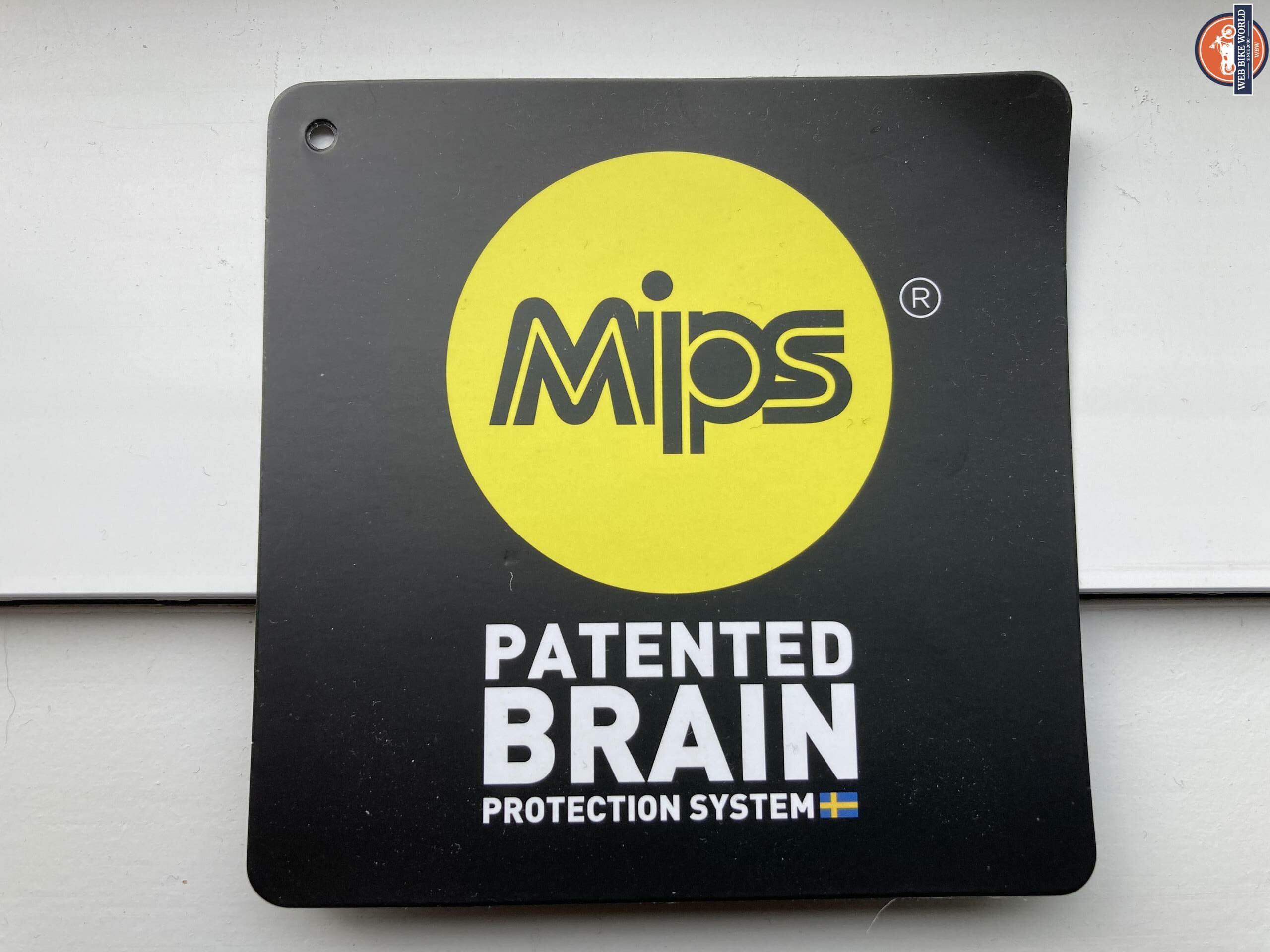
According to Bell’s engineers, they’ve seen a 30 percent reduction in stress delivered to the brain with MIPS employed over a non-MIPS style helmet.
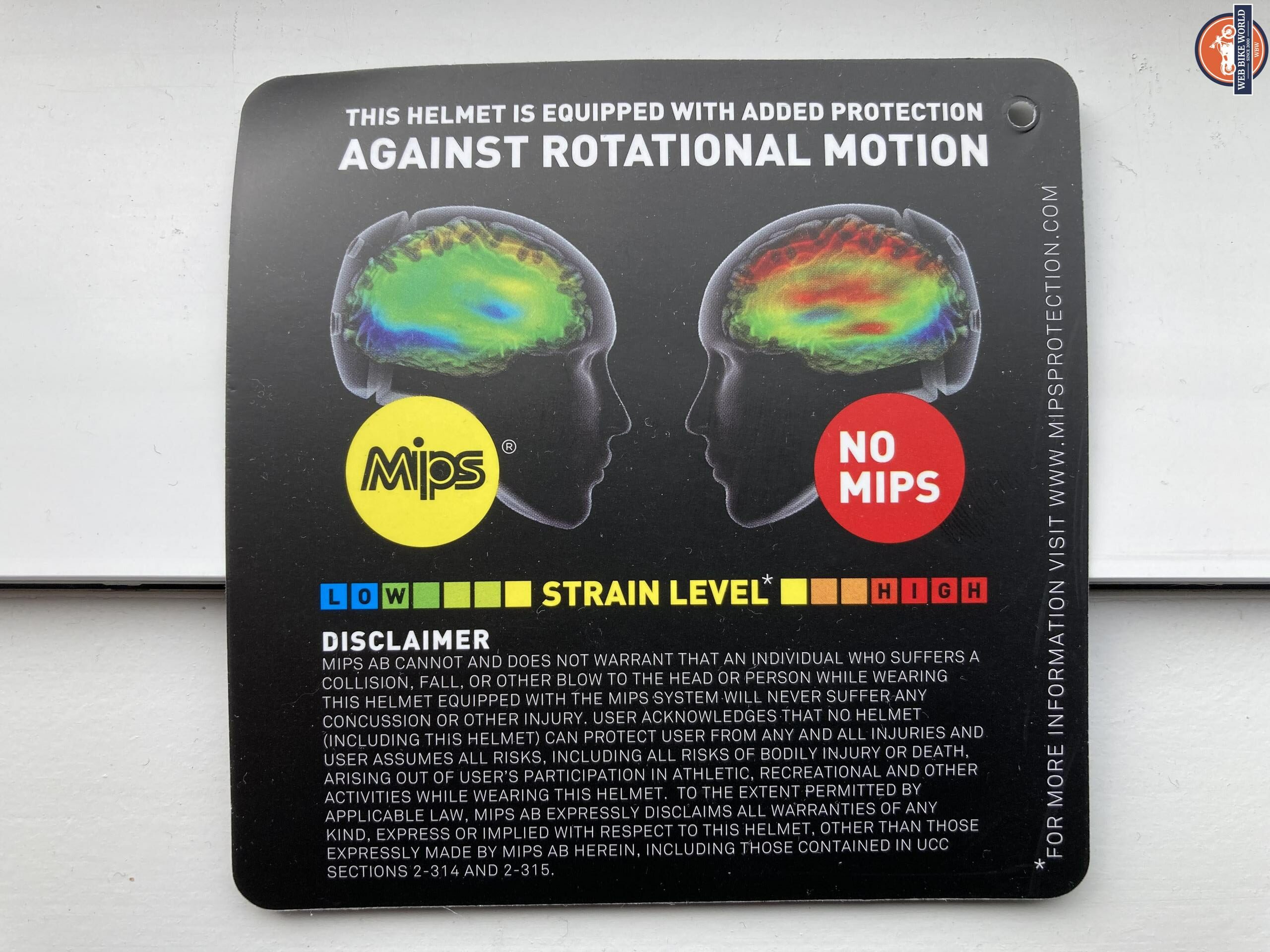
In a fall, you’re typically carrying a lot of forward momentum. On hitting the ground, the helmet shifts to alleviate some of those rotational forces. The MIPS technology, long a staple of bicycle helmets, relies on a low-friction layer of plastic to allow the helmet a small range of movement during an angled impact (10-15 mm), which in turn reduces the amount of energy transferred to the rider’s brain.
In the STAR DLX MIPS, the slip-plane layer is a crown piece that rests between the EPS liner and interior padding. It’s connected to the EPS liner by four elastomeric bands to provide 10-15mm of movement in all directions, absorbing rotational-impact energy from angled impacts.
The Star DLX MIPS has DOT and ECE certification, as well as the much more coveted SNELL certification (see also: The Neglected Truth about SNELL M2020). In addition, the helmet achieved a perfect 5 out 5 on the SHARP safety test. So, to return to a point I made at the head of this section, if safety is the criterion by which all helmets are ultimately judged, this is a very safe helmet that will do the job if things go south while you’re on the bike.
Bell Star DLX MIPS Helmet Noise
With respect to sound, the helmet construction, coupled with the chin curtain, has proven remarkably effective at dampening noise through the first 1000 km. My benchmark helmet has been my Shoei RF-1200, which is pretty darn quiet, but the Bell Star DLX MIPS has, in my opinion, got it beat.
Around town at speeds up to 70-80 km/hr (40-50 mph) I can comfortably hear the hum of my bike’s engine, but my eardrums don’t feel like they’re under assault. And on the highway this effect is heightened. At speeds up to 140 and 150 km/hr (85-90 mph) the helmet is remarkably quiet. Kudos to Bell for achieving a helmet designed for an upright riding position that is quiet—a boon to all of us sport adventure and touring riders.
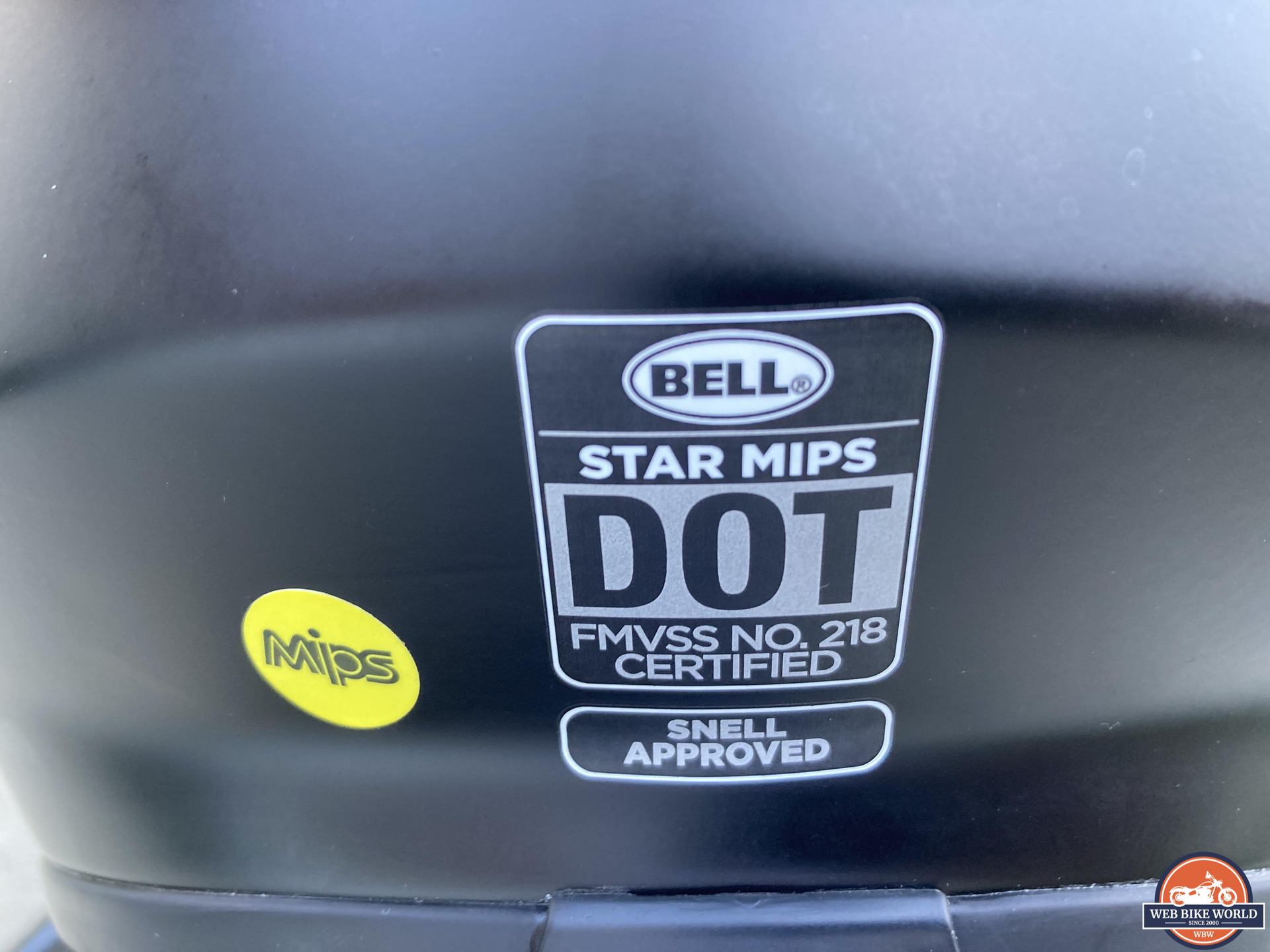
Bell Star DLX MIPS Helmet Face Shield (Visor)
The DLX in the name of the helmet indicates that a Panovision ProTint Photochromatic shield is included in the box. For clarity, in the U.S. the Star DLX MIPS ships with the ProTint shield installed. For the rest of the world, the helmet comes with a Panovision Pinlock Clear shield installed and an additional Panovision Dark Smoke Pinlock shield with Tear-Off Posts in the box.
Although I live in Canada, the good folks at RevZilla sent me a helmet with the ProTint Photochromatic shield installed. The beauty of this is that it automatically transitions with light conditions, darkening when exposed to sunlight and clearing in low light. It eliminates the need to carry multiple shields and fuss with changing them as light conditions change.
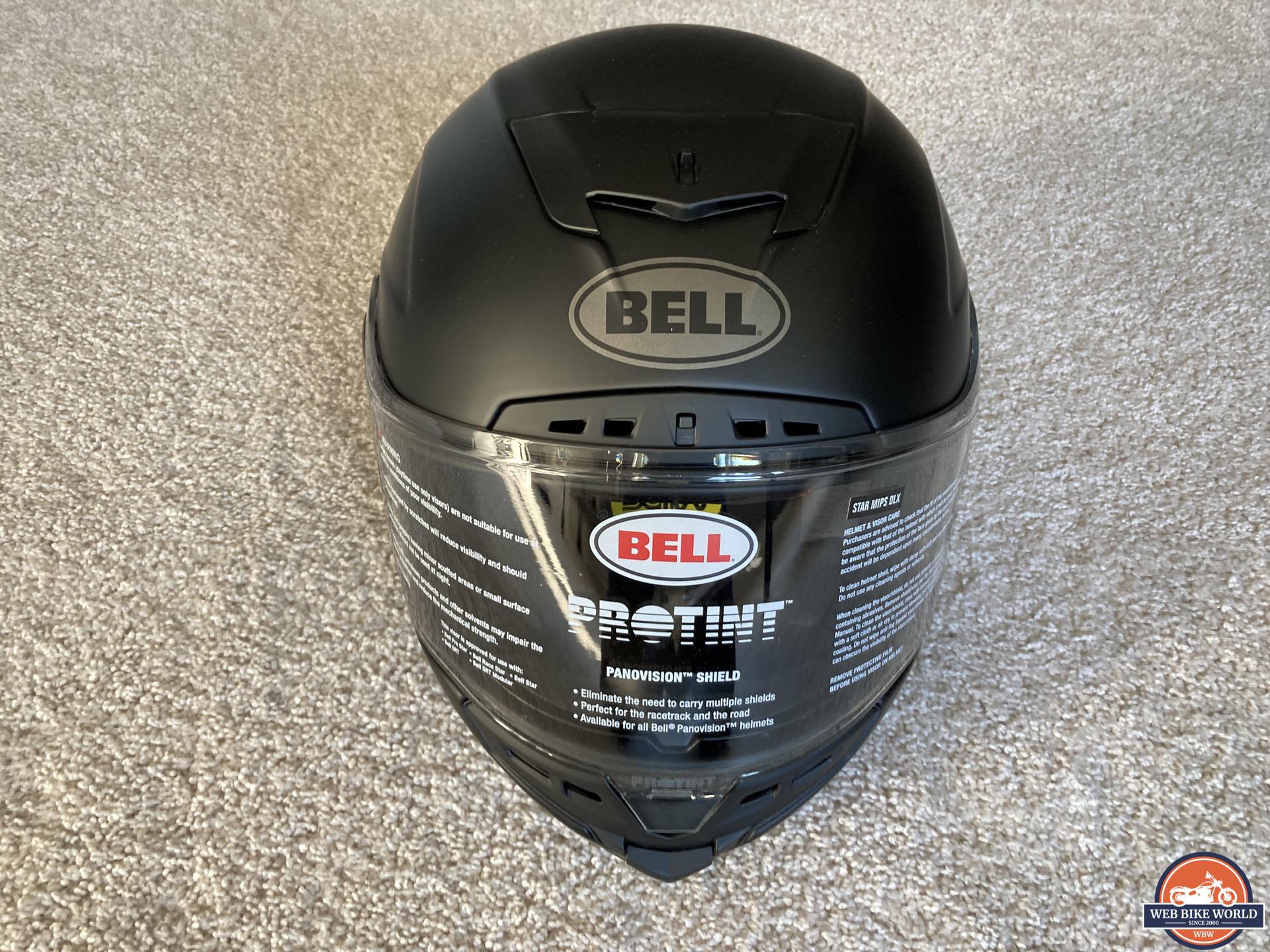
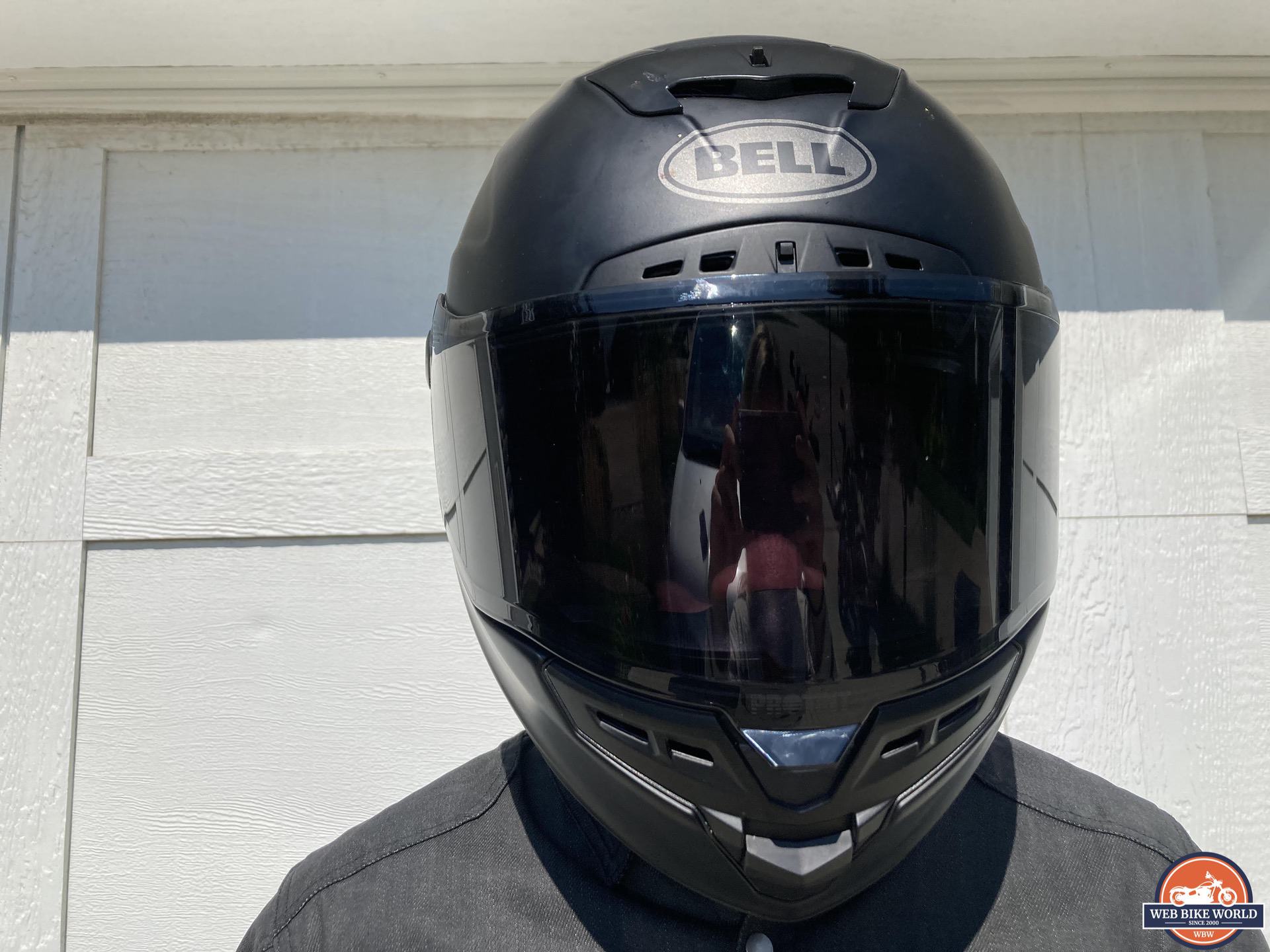
Some riders complain that transition shields don’t change quickly enough from light to dark and back again. While this may have been true for earlier versions of the technology, or for “transitions” shields offered by other brands, I’ve been blown away by how effective the ProTint shield is on the DLX MIPS.
I live in Alberta, Canada, in the foothills of the Rocky Mountains, and I put roughly 1500 kms on this helmet between mid-July and mid-August—a time of year when the sun genuinely beats down. At no time did I notice any lag in the shield adjusting to blinding sunlight, or to variable conditions as I rode in and out of the sun on winding mountain roads. In a word, this shield rocks—it’s the real deal.
Part of what makes the shield or visor on the DLX MIPS so impressive is that it’s MASSIVE. The Streetview profile used for the helmet is designed for a more upright, sport or touring position. The wide viewport gives riders additional vertical and lateral visibility over earlier versions of the Star and more traditional viewports on other helmets.
This allows the rider to see better in a tight or tucked position and make safer lane changes and head-checks—and to do so with reduced neck strain and fatigue, keeping the rider more focused on the task at hand. Riding from Edmonton to Banff last weekend (800 km roundtrip), I deliberately took the TransCanada Highway (not the most scenic or interesting route) just so I could put the DLX MIPS’s visor to the test.
Cruising at 140 km/hr I found head-checks were effortless; much better than with my aging Shoei RF-1200. Also—and this is admittedly more of a construction or build quality comment than a visor comment—there was zero buffeting and headshake.
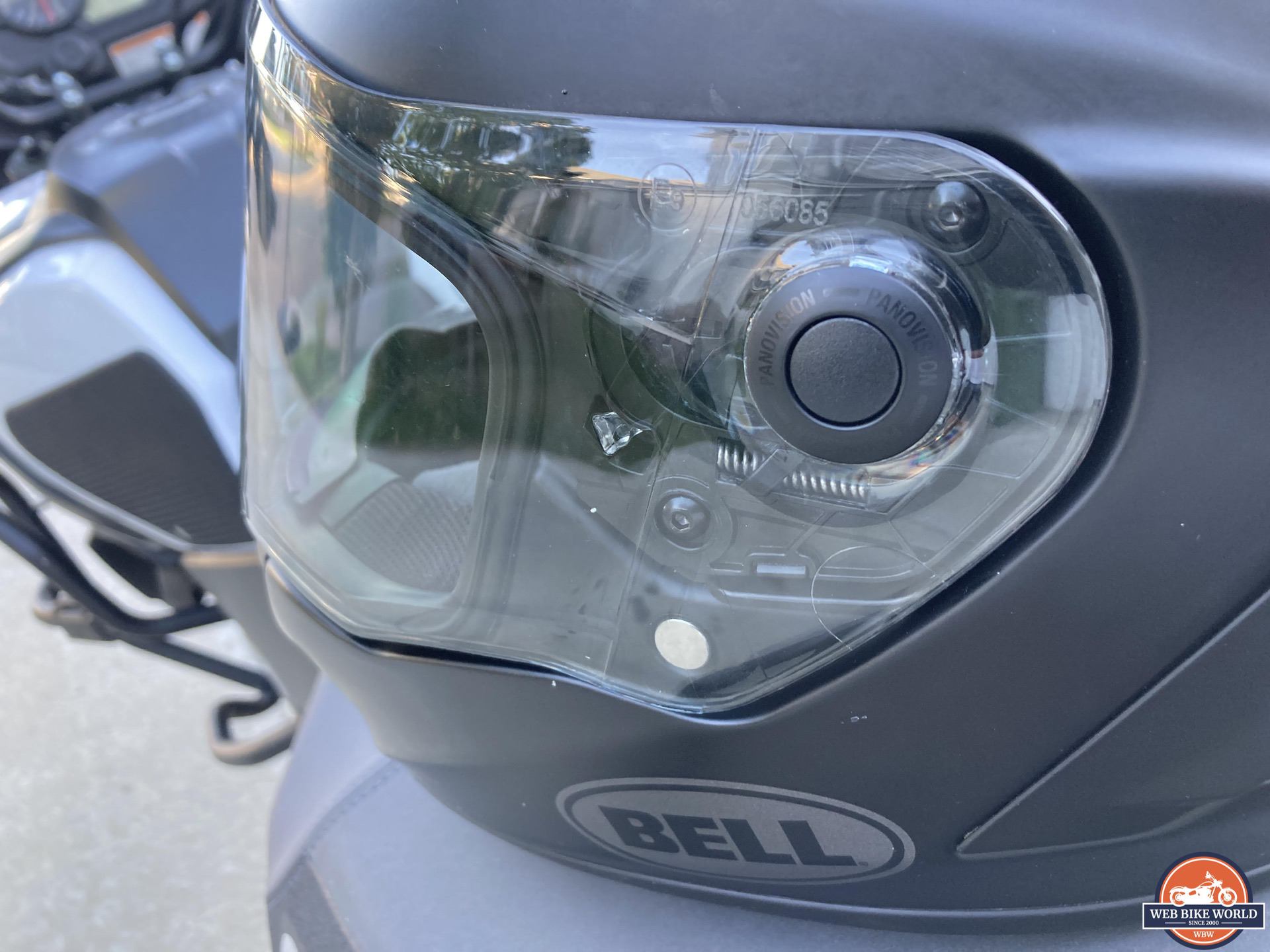
The action of the visor is smooth when actuating up and down, although you do not have many options—you can leave the shield fully open (or up), cracked for defogging, or snapped fully closed. Again, this is not an issue for me, as these are the most common positions in which I position the visor while riding, but others may want a few more detent options.
The locking mechanism is located in the center as opposed to the more common left side, but this took virtually no time at all to figure out. If anything, this makes it even easier to operate with a gloved left hand.
Changing out the visor or removing it for cleaning is tool-less and very easy—you raise the visor into the fully open position; push the visor release buttons and slide the visor forward along a pivot track; and spread the visor slightly. It took longer to describe this simple action than it takes in practice.
Bell Star DLX MIPS Helmet Ventilation & Airflow
Okay, time for another nitpick. The Star DLX MIPS is not going to wow anyone with its ventilation and airflow. The helmet has intake vents on the chin, brow, top and rear-quarter of the helmet, as well as three exhaust rear ports (7 vents in all).
All of these are operated by small sliders that may raise an eyebrow at first; they appear to be too small to operate with gloved hands, but I found them to be intuitive and after an hour or so I could open and close them while wearing gloves without any problems. The vents create a Venturi effect; hot air is naturally drawn out as cool air flows in.
The problem is that the MIPS liner in the crown of the helmet impedes airflow, particularly from the top vents. A deal-breaker? Absolutely not, but if you run hot, you should keep this in mind. I’ve ridden the Star DLX MIPS in temperatures that pushed into the low-to-mid 30 degrees Celsius and still felt comfortable—not refreshed by a cool breeze, mind you, but comfortable. Overall, I would characterize the ventilation and airflow as okay, maybe even good, but definitely not great.
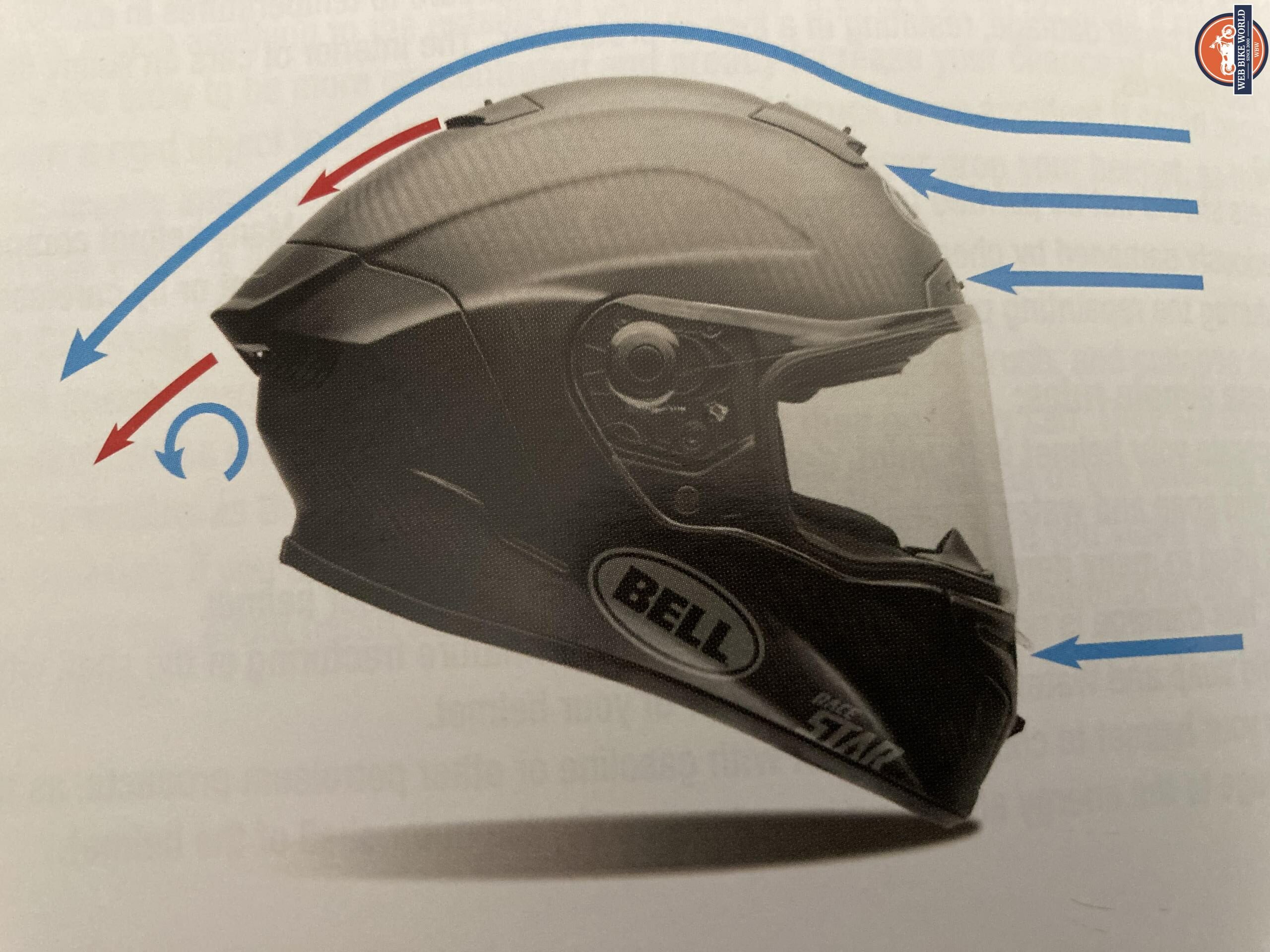


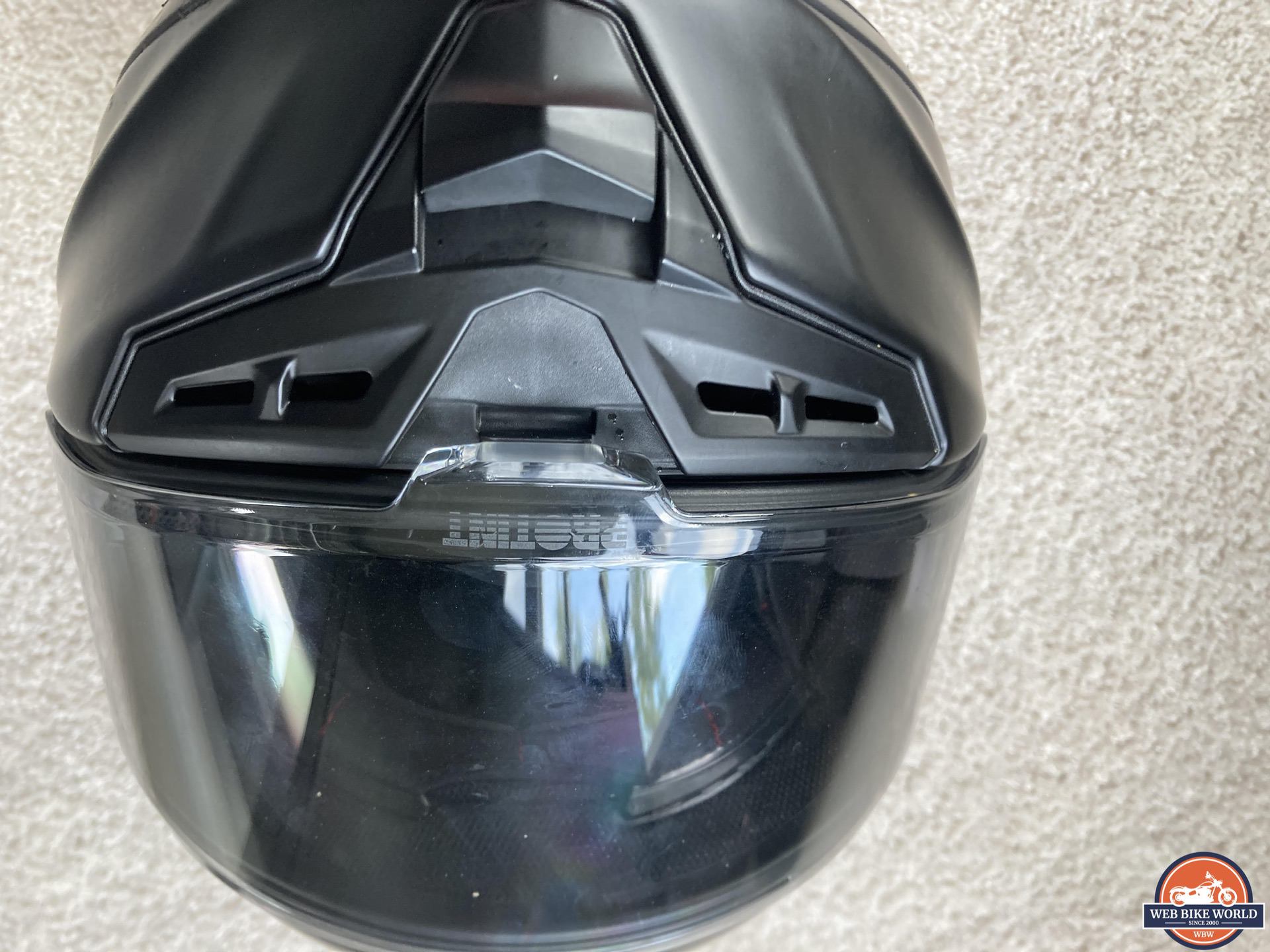


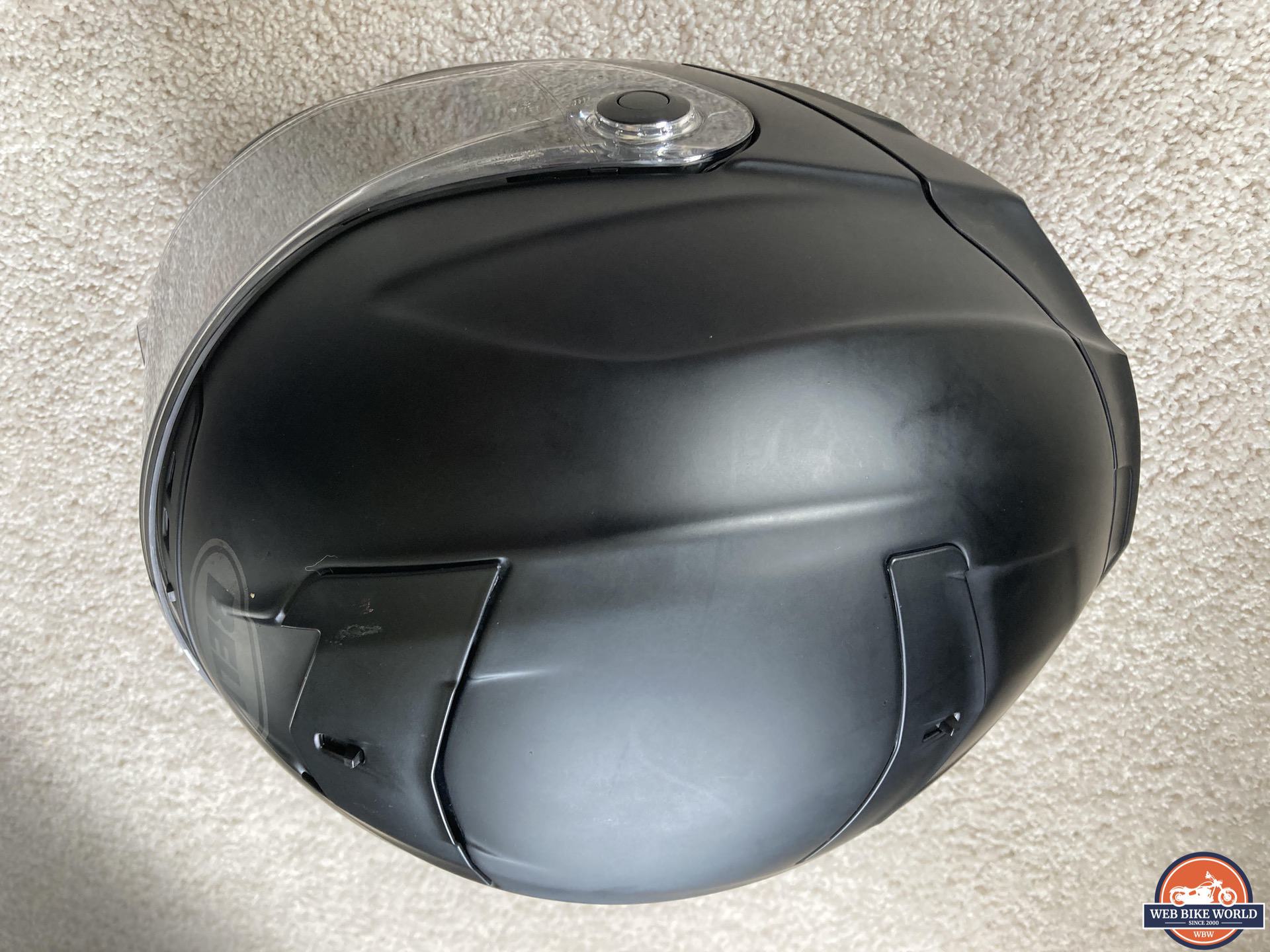


Bell Star DLX MIPS Helmet Construction
The Star DLX MIPS is the entry or gateway helmet to Bell’s Star lineup, but context is important here—every helmet in the Star lineup is a premium offering and it shows in the construction and build quality.
Bell has used their proprietary mix of Aramid, carbon fiber, and fiberglass to deliver all the strength of carbon fiber in a more budget-friendly package. This “Tri-Matrix” shell construction offers exceptional strength and durability. It’s not as light as a pure carbon fiber helmet, of course, but it arguably has more durability built into it as a result of the combination of woven synthetic fibers.
For what it’s worth, Bell has tweaked the shell to drop a few ounces off earlier versions of the helmet, extended the rear spoiler a bit, and added room in the ear cavities for communications speakers.
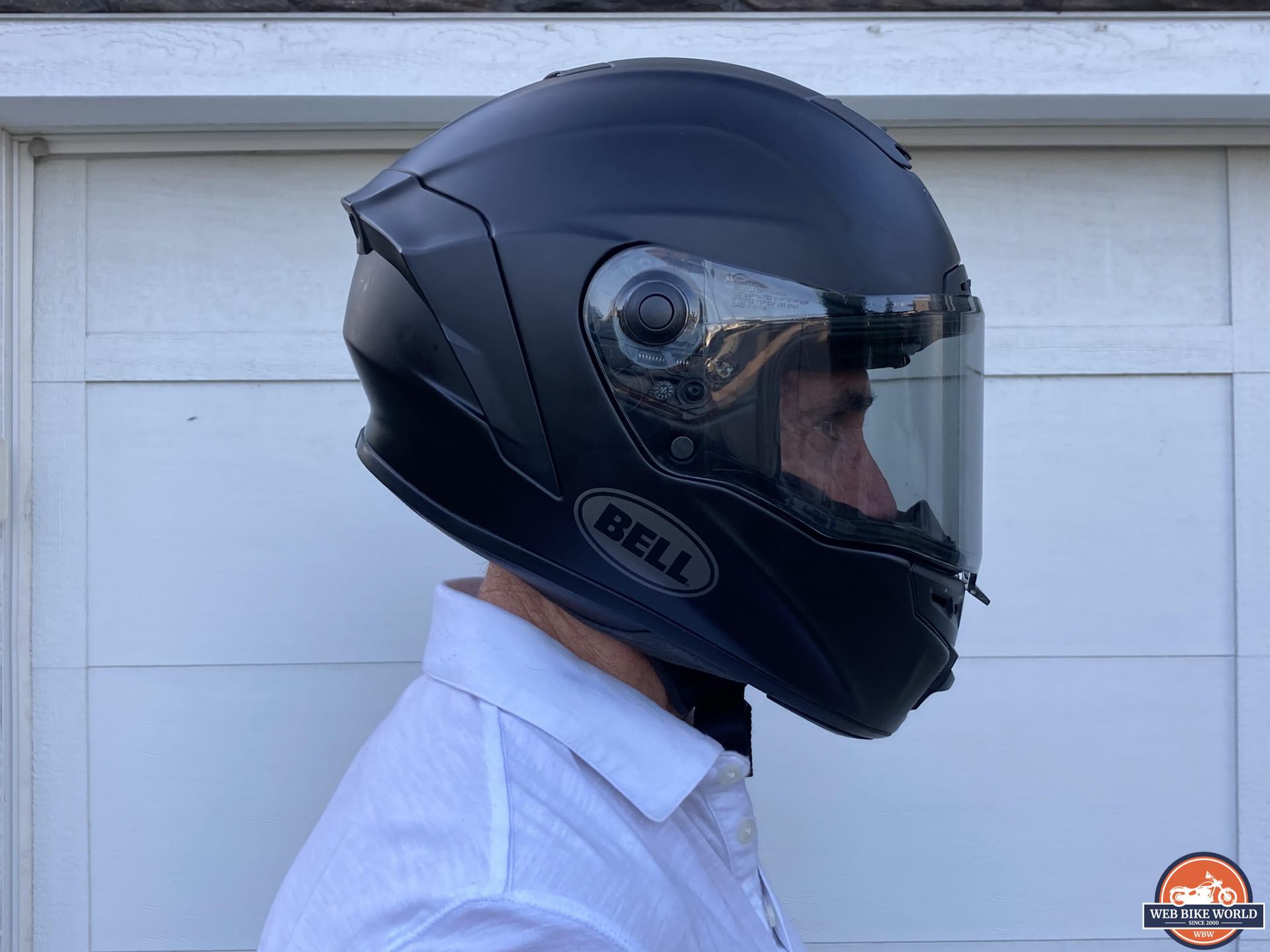


One of the nicest features of the Star DLX MIPS is that Bell has used six shell sizes and six liner packages to ensure a custom fit. Sizes run from XS to XXL, which helps eliminate the “bobblehead problem” that can occur with helmets where the manufacturer builds fewer shell sizes and adjusts interior room by adding or subtracting pads. That method saves production costs, but it also has an effect on the overall look of the helmet, as well as its weight.
Speaking of weight, a size Medium Star DLX MIPS weight 3 pounds 14 ounces or 1755 grams. That is by no means a light helmet, but I have to say that I’ve worn the helmet for 6-7 hours at a time and have never felt that it was heavy. I feel no neck strain and absolutely no fatigue, and as noted earlier, zero buffeting at highway speed.
To hold everything in place, the Bell Star DLX MIPS uses the trusty double D-ring fastener—albeit with a very cool feature. There is a magnetic fastener on the D-ring, and once you’ve pulled the strap through, all you need to do is get one end near the other and it snaps closed with no issues.
Be warned, though, the magnet is VERY strong, and when you’re first passing the helmet strap through the double D-ring, it’s inevitable that the magnet will grab hold of the strap before you want it to. Again, this is something you figure out quickly, and you won’t be fumbling around for very long at all.
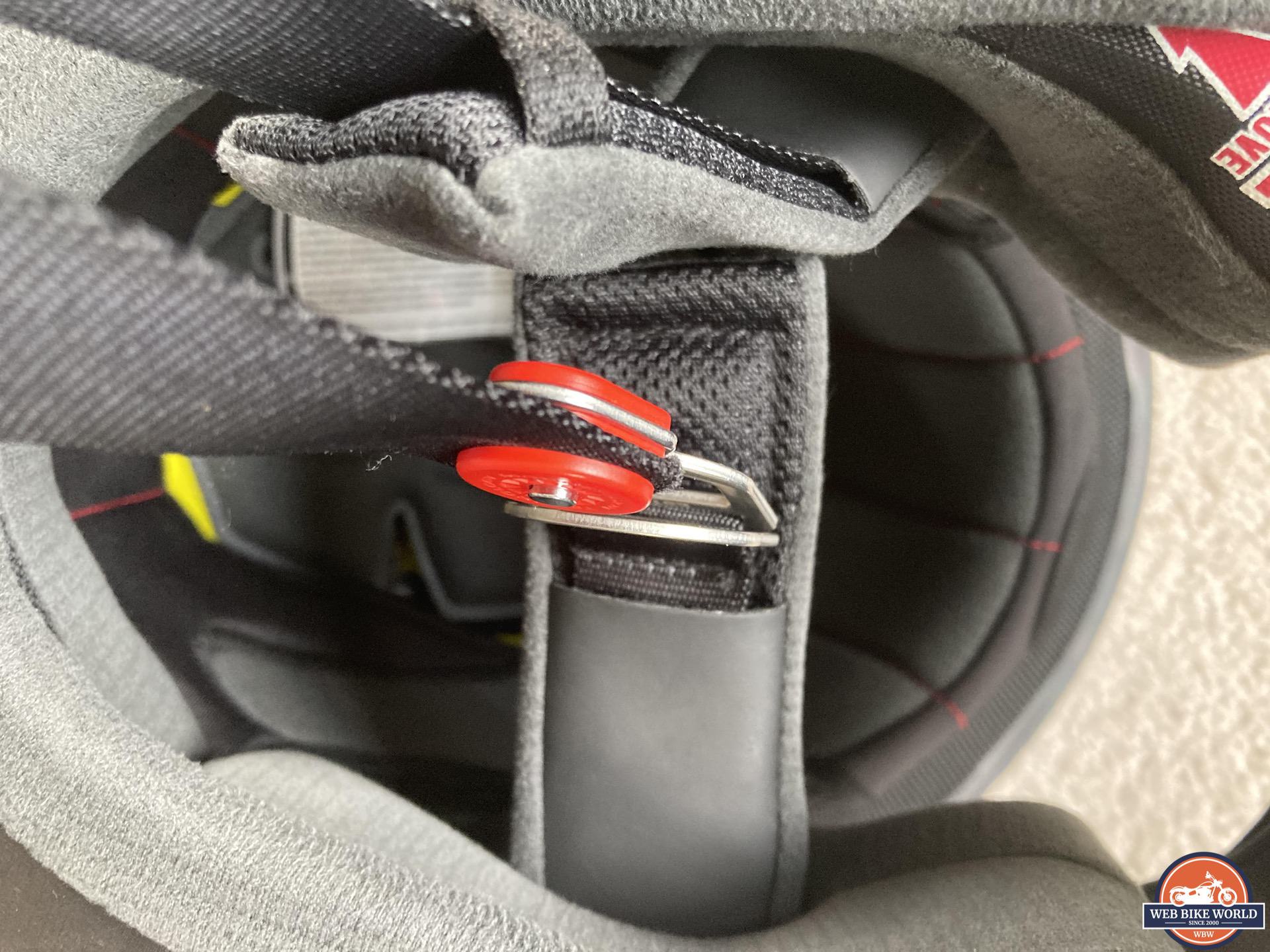


Finally, the Star DLX MIPS comes with Bell’s rock-solid 5-year manufacturer’s warranty.
Final Thoughts on the Bell Star DLX MIPS Helmet
I know many riders are monogamous with respect to their helmets—Arai people won’t wear anything but Arai, Shoei people won’t wear anything but Shoei and so on. It’s perhaps better to say that the most important consideration when buying a helmet is to ignore brands and find a helmet that fits your head shape properly.
All that said, I’ve been a “Shoei guy” for several years and genuinely felt it would take something very special for me to change. Well, the 2022 Bell DLX MIPS is that special helmet. It’s taken race-track inspired aerodynamics and fused it to an upright or touring position, built in a massive viewport to enhance visibility in all directions—and therefore situational awareness—and made it comfortable, quiet and state-of-the-art safe.
What more can I say? At this price point, the DLX MIPS is not cheap by any means, but it offers a ton of value for anyone wanting a premium road-focused helmet.
wBW Specs
- Manufacturer: Bell
- Price (When Tested): $549.95 USD (for matte black model; $589.95 for other colors)
- Made In: China
- Size Tested: Medium
- Review Date: July-August 2022
Important Links / Where to Buy:


